5 Medical Procedures From 30 Years Ago (That Now Seem Barbaric)

Medicine has walked a long and weird road to reach where it is right now. But today, we're not going to tell you about the gross and painful excuse for health care they had back in ancient Egypt, or medieval times, or even during the world wars. Today, we're talking about the 1970s and 1980s. It was a time when 60 Minutes and Danny DeVito were on TV and Star Wars films were in theaters, but when it came to basic medicine, it wasn't much like the world we know at all.
In The '80s, Doctors Pumped Alcohol Into Pregnant Women To Halt Labor
In the '60s, a chemist named Anna-Riitta Olsson was feeding alcohol to rabbits because it was the '60s, and people back then knew how to have a good time. She discovered that pregnant rabbits were a lot less likely to go into labor after sweet booze in their veins calmed them down. Then Olsson went and got pregnant herself, and just seven months in, her own labor began. Her husband, the obstetrician Fritz Fuchs, figured "what's good for rabbits is good for my wife" and stuck a tube in Olsson with some ethanol flowing down it.

The contractions stopped. Having succeeded in making his wife give exactly zero Fuchs, and with the pregnancy lasting another two months and ending with a normal delivery, Fritz decided to bring their discovery to the masses. Soon, hospitals were using alcohol as a standard method for delaying premature births. Sometimes, it was very clinical, with ethanol solution dripping in through an IV. Other times, it was less formal and more fun, with women going into premature labor being handed a vodka and orange juice cocktail as soon as they entered the hospital.
Then came the '70s, and the medical community identified a little something called fetal alcohol syndrome. Did that put an end to the practice of sending alcohol toward the escaping fetus? Nope! Doctors reasoned -- correctly, to be fair -- that chronic exposure to alcohol during the first couple trimesters is very different from a sudden shot toward the end. Also, getting chucked out of the body altogether could be worse for a fetus than a drink or two. Also also, the hospital's barkeep was practically part of the family now, and no one wanted to fire him.
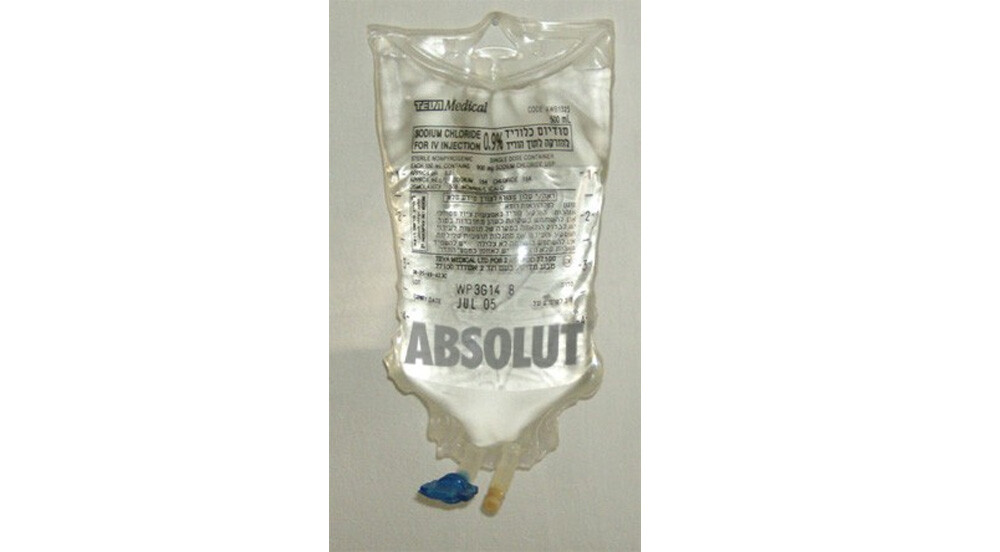
Matanya/Wiki Commons, Pernod Ricard
By the '80s, doctors were starting to notice that alcohol left the pregnant patient needlessly throwing up or suffering from headaches, and it occasionally led to such undesirable effects on the fetus as death. Plus, it's possible ethanol was never as effective at delaying labor as everyone originally thought. They went on using it for some years more, though, till they landed on better alternatives. Today, we have other drugs for keeping the preemie in, ones that accomplish the job without being alcohol. Drugs -- they're great!
Newborns Received No Anesthesia, As Doctors Believed They Felt No Pain
When babies like the ones we were talking about found themselves born prematurely, they often went straight to the neonatal intensive care unit. Other newborns went there too, and from there, both might go next to the operating room -- where, well into the '80s, they would be operated on with no anesthesia of any kind. A procedure like circumcision would likely come with no anesthesia even right till the end of the '90s, and we're sure many of you are screaming thinking about that fact alone. But we're also talking about more major operations. In the '80s and earlier, doctors would perform open-heart surgery on newborns without supplying any kind of pain relief.
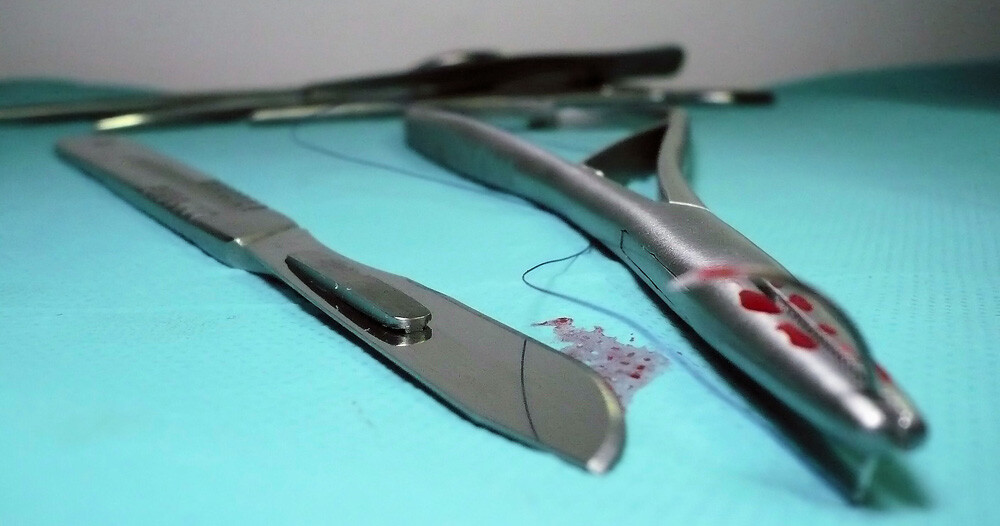
At the time, doctors believed babies' nervous systems weren't developed enough to sense pain. You might think people would have concluded otherwise several millennia ago, the very first time someone poked at a baby and saw it shriek, but doctors figured there's a difference between reacting to contact and experiencing suffering. "An octopus tentacle on your plate might recoil when you stab it," argues our imaginary '80s doctor, "but that doesn't mean someone's feeling pain, right?" And even if babies could feel pain, doctors reasoned, they probably wouldn't remember it when they grew up. So, given how hard it is to calculate the safe dosage of anesthesia for a newborn, the safest thing to do was to skip the anesthesia and let them forget the pain.
Of course, babies thrashing about between one cut and the next would bother surgeons whether or not any actual sentient suffering is going on. That's why doctors did inject babies with something, if not anesthesia. They'd inject a paralytic agent. Even while feeling every part of their surgery, the babies would be unable to move or respond in any way.

It took the dedicated work of one Stanford doctor, Kanwaljeet Anand, to convince the medical community that infant pain is real. He measured the stress hormones associated with pain, found that those do spike when surgeons stab babies, and found anesthesia makes them rise less -- and anesthesia also increases the chance of the baby surviving the operation. Newspapers in the years that followed would report on these findings with this deadpan line: "Recent research has shown that children do feel pain." That same report (from 1991), contains this accurate prediction from a specialist in the new subject of pediatric pain relief: "I suspect in 10 or 20 years we will look back and see what we were doing to children, and think that this was an uncivilized period in medical history."
Doctors were surprised that all newborns feel pain and even more surprised that prematurely born babies feel pain. These discoveries naturally raised the question of whether fetuses feel pain even early in the pregnancy, the implications of which would be, uh, no. We're not touching that one. Next topic.
Doctors Transferred Blood Using Their Mouths, Causing Much Infection
Hospitals are home to the worst diseases you'll ever run into, so doctors do all they can to stop germs from moving around. Doctors wore masks before it was cool. They sterilize themselves as best as they can then hold their hands stiffly in front of them to keep from getting dirty again. Janitors, who mock the medical residents and secretly run the place, slather the whole place in disinfectant. All of which would seem to be for naught if doctors would then go stick their lips directly on tubes of body fluids, but hey, nobody's perfect.
Yes, hospitals used to encourage germ fellatio, and it was thanks to this piece of equipment here:

That's a pipette. It draws fluids upward through suction. In the absence of any special equipment for providing suction, you use your mouth. This might make you a little uncomfortable if you're in a chemistry lab and dealing with acids, and it should make you extremely uncomfortable if you're in a hospital dealing with infectious samples, and yet this was standard practice for decades.
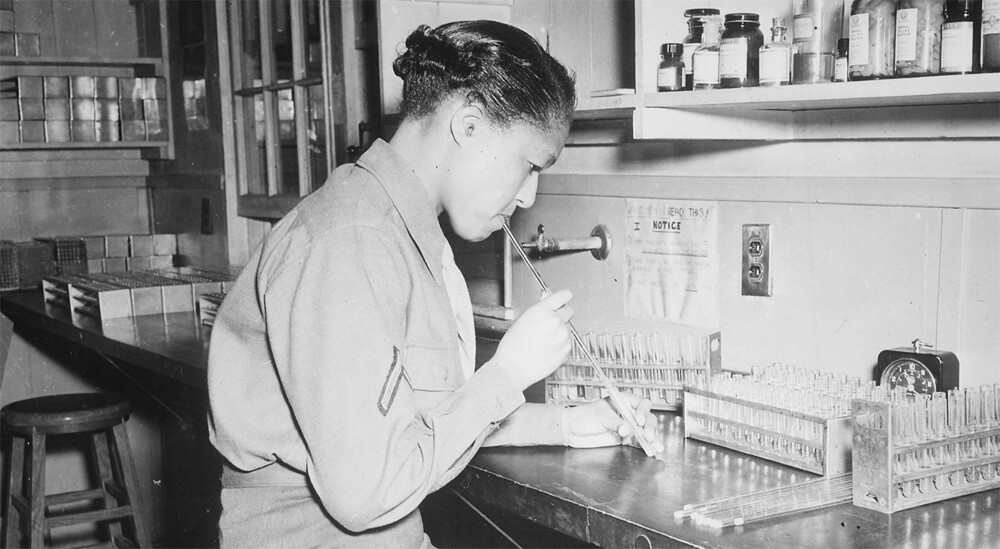
The first recorded case of someone getting infected this way was all the way back in 1893, when a doctor sucked too hard and got a mouth full of typhoid. Studies in the decades that followed showed that a fair chunk of all lab infections came from this most obviously risky process, but it wasn't until the '60s in Europe that people built a pipette that didn't require oral stimulation. In then took till the middle of the '70s for a replacement like that to come the US, and mouth pipetting would continue being used in some form for decades more.
Labs have gone on improving pipettes since then, making new ones that can measure liquids with ever increasing precision. This microscopic one invented in 2017 became the smallest pipette ever:

Paramedics Were Unheard Of Until The '70s
Ambulances have existed in some form or another for ages. You had horse-drawn carriages shuttling bodies during the Civil War in a most romantic manner:
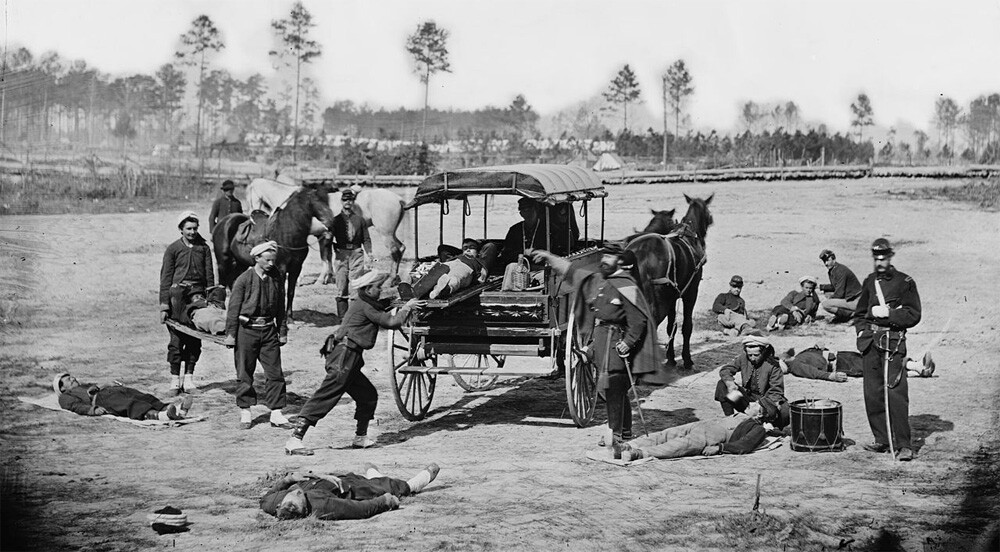
Thanks to World War I, we got motorized ambulances almost as soon as we got mass produced motor cars of any kind:
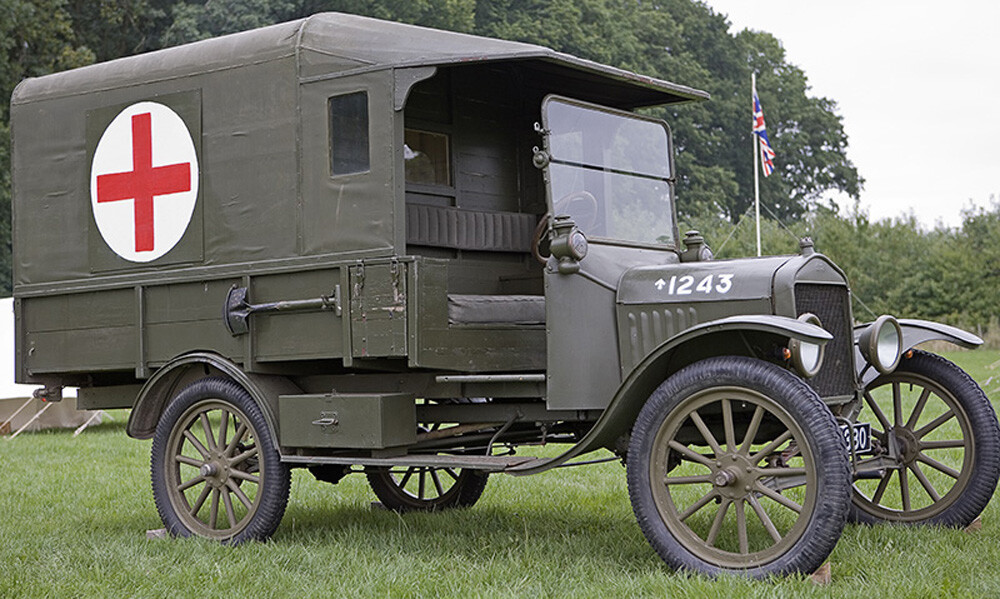
By the 1960s, ambulances were all over the country, even if they weren't operated by hospitals themselves. About half of all ambulances were hearses, owned by funeral homes -- those cars were already made to transport bodies, so it was a natural fit. We're not saying that undertakers routinely murdered the patients they were carrying to drum up funeral business, but that's absolutely what we'd do in that position.
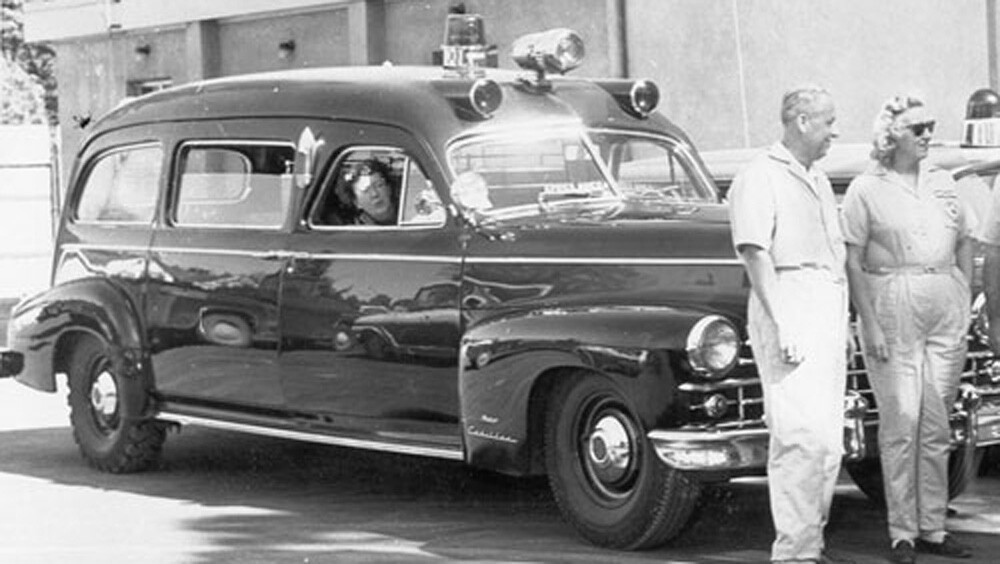
You'll notice, though, that all these vehicles merely transported patients. They had no means for treating patients, even those who needed immediate emergency care. The first time an ambulance got any kind of medical equipment was 1969, when a Los Angeles ambulance installed a heart monitor.
After this, "paramedic units" became a thing, with the city of Pittsburgh leading the charge. But the concept didn't take off right away. In 1972, the entire country had just 12 paramedic units. We're using 1972 as a reference because that was the year a show called Emergency! debuted, and it seems this six-season show on NBC would be the biggest factor in convincing the country they needed actual emergency services driving around.
Emergency! was set in Los Angeles and featured a couple of hunky rescue guys who fought fires and also delivered medical care to Californians getting carted in ambulances. Lawmakers actually cited the show when passing bills to create emergency services, and the number of paramedics nationwide exploded over the course of the following decade. Emergency! also got an animated spinoff starring the original cast. In the cartoon, the emergency crew were accompanied by a dog and a monkey, but these features didn't become standard in paramedic units because life is unfair.
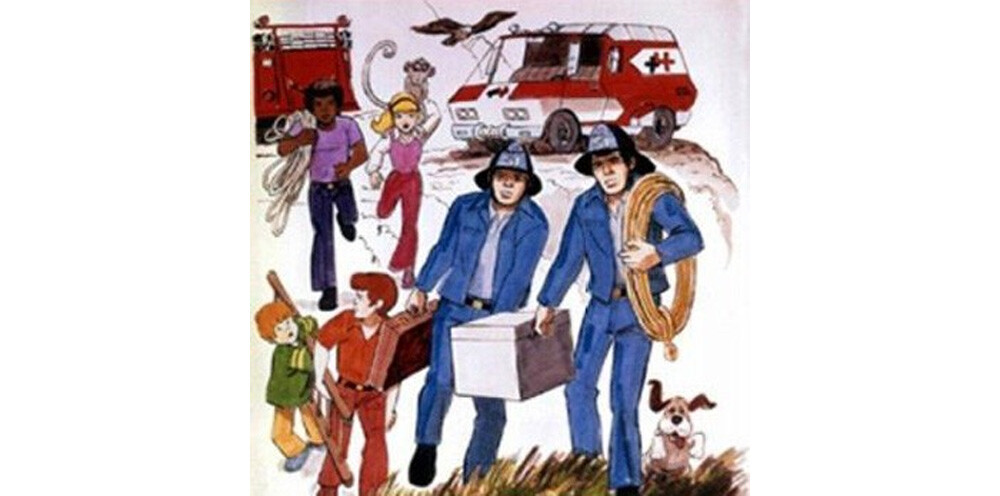
NBC
Doctors Looked In Your Head By Turning You Upside Down And Spinning You Around
Gazing into someone's head isn't easy without cutting them open, and cutting them open isn't particularly easy either. We've had X-rays since the 19th century, but those are only good for looking at bones and metal endoskeletons. If you wanted to see exactly what the brain looks like, you'd need some other kind of scan, and though we'd eventually settle on MRIs, scientists first had to answer "magnets, how do they work?," which would take decades.
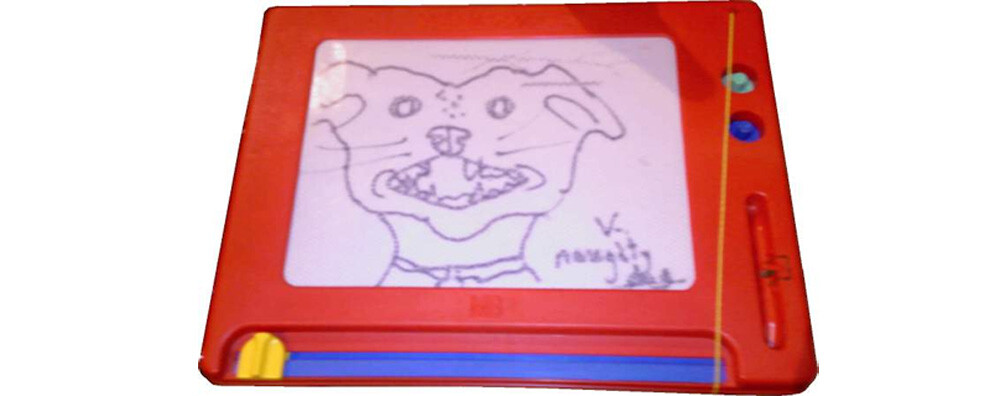
Doctors could kind of see what the brain looks like using X-rays, just not very well. The problem was the fluid that the brain sits in lets radiation pass through pretty much the same way the brain does, so on an X-ray, it's all a blur. To get the brain to stand out, doctors needed to replace some of that fluid with air. So that's what they did. They drilled a hole into the skull, injected air, and sucked the fluid out. In time, they switched to a slightly more advanced method whereby they'd accomplish the same thing by merely tapping into the spine.
Either way, though, they'd then have to flip the head into different positions so that the air and fluid in the skull would slosh around till the scan got to picture everything. With the head unfortunately usually attached to the rest of the body, this meant flipping the entire body around. At first, doctors did this through "manual rotation" -- doctors would pick you up hold you upside down themselves. The process later became a lot easier on doctors (if not on patients) with the 1968 invention of the "somersault chair," which rotated the patient mechanically.
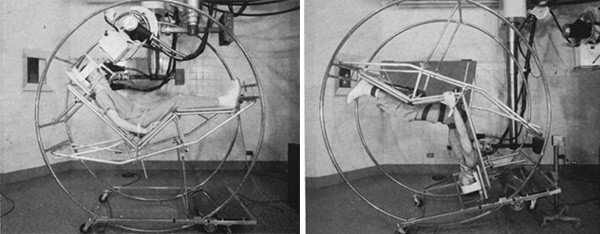
From those photos, this looks like maybe something from an early World's Fair, but hospitals kept using this process right into the 1980s. They eventually had to dispense with it, both because it was extremely unpleasant for the patient and because the name -- pneumoencephalography -- took far too much time to pronounce.
The invention of the MRI made the pneumoencephalogram obsolete, so you'll thankfully never have to experience one yourself. And a few decades from now, we'll surely come up with something even better. At which point our descendants will say, "Would you believe doctors used to lock you in a tiny tube for an hour and blast you with magnetism? Hospitals in the 2020s were insane."
Follow Ryan Menezes on Twitter for more stuff no one should see.